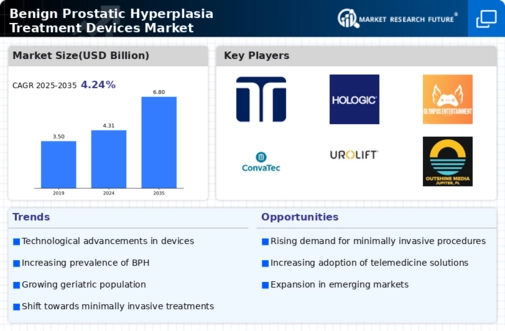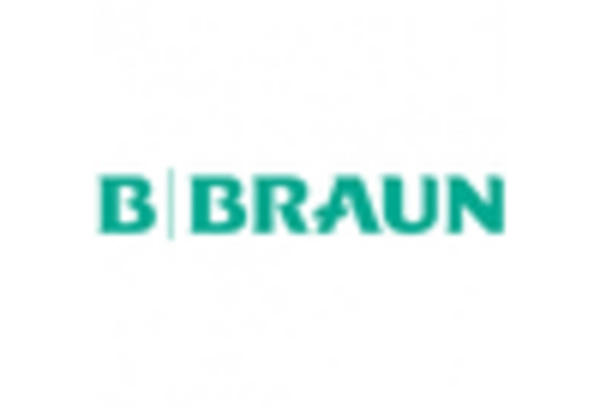Rising Awareness and Education Initiatives
Increased awareness and education regarding benign prostatic hyperplasia are pivotal in driving the Benign Prostatic Hyperplasia Treatment Devices Market. Healthcare organizations and advocacy groups are actively promoting information about BPH symptoms, risks, and treatment options. This heightened awareness encourages men to seek medical advice and explore available treatment devices. As a result, the market is experiencing a notable uptick in demand for BPH treatment solutions. Educational initiatives, including community outreach programs and online resources, are instrumental in dispelling myths surrounding BPH, leading to earlier diagnosis and intervention. This trend is expected to continue, further propelling market growth.
Regulatory Support for Innovative Treatments
Regulatory bodies are playing a crucial role in shaping the Benign Prostatic Hyperplasia Treatment Devices Market by providing support for innovative treatment solutions. Streamlined approval processes for new medical devices and therapies are encouraging manufacturers to invest in research and development. This regulatory environment fosters innovation, leading to the introduction of novel treatment devices that address the needs of BPH patients. As regulatory agencies prioritize patient safety and efficacy, the market is likely to see an influx of advanced treatment options. This supportive regulatory framework is essential for sustaining market growth and ensuring that patients have access to the latest therapeutic advancements.
Technological Innovations in Treatment Devices
Technological advancements in medical devices are transforming the Benign Prostatic Hyperplasia Treatment Devices Market. Innovations such as minimally invasive surgical techniques, laser therapies, and advanced imaging technologies are enhancing treatment efficacy and patient outcomes. For instance, the introduction of new laser systems has improved the precision of procedures, reducing recovery times and complications. The market is witnessing a surge in the adoption of these advanced devices, as they offer significant advantages over traditional surgical methods. Furthermore, the integration of digital health technologies, such as telemedicine and remote monitoring, is likely to enhance patient engagement and adherence to treatment plans, thereby driving market growth.
Growing Investment in Healthcare Infrastructure
The expansion of healthcare infrastructure is a significant driver for the Benign Prostatic Hyperplasia Treatment Devices Market. Governments and private entities are increasingly investing in healthcare facilities, particularly in emerging economies. This investment is aimed at improving access to medical care and advanced treatment options for BPH. Enhanced healthcare infrastructure facilitates the availability of specialized urology clinics and hospitals equipped with the latest treatment devices. As a result, patients are more likely to receive timely and effective treatment for BPH, thereby stimulating market growth. The trend of upgrading healthcare facilities is expected to persist, contributing positively to the market landscape.
Increasing Prevalence of Benign Prostatic Hyperplasia
The rising incidence of benign prostatic hyperplasia (BPH) among the aging male population is a primary driver for the Benign Prostatic Hyperplasia Treatment Devices Market. As men age, the likelihood of developing BPH increases significantly, with studies indicating that nearly 50% of men over the age of 50 experience some degree of this condition. This demographic shift is expected to continue, leading to a higher demand for effective treatment options. Consequently, the market for BPH treatment devices is projected to expand, as healthcare providers seek innovative solutions to manage symptoms and improve patients' quality of life. The increasing awareness of BPH and its treatment options further fuels market growth, as more patients seek medical intervention.


















Leave a Comment